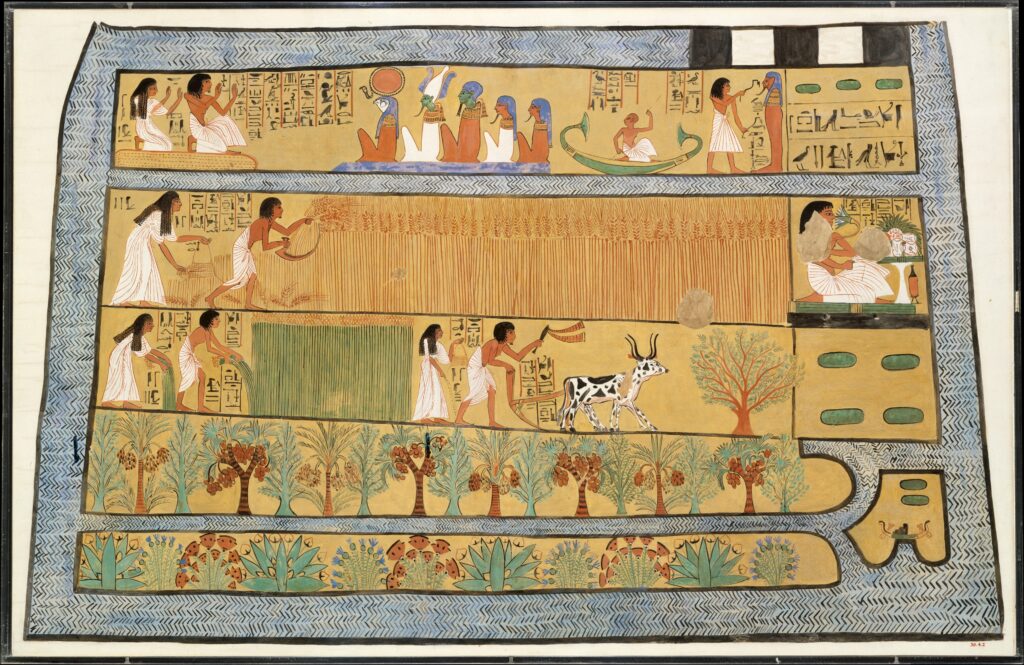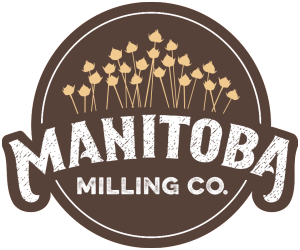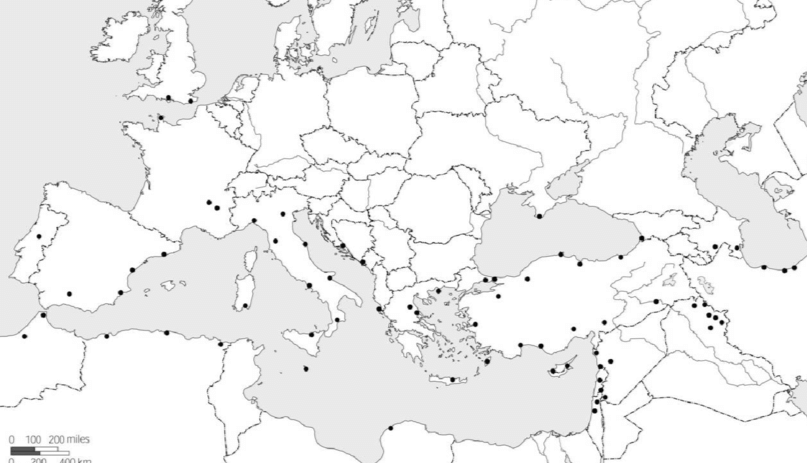What is Linseed?
Linseed vs. Flaxseed
Maybe you’ve heard the word “linseed” or “linseed oil” before, but did you know that it means the same thing as flaxseed or flaxseed oil? The term linseed has its roots in the Old English word “lin” which originated in the Greek or Latin words “lino” and “linum” [1]. The scientific name for flaxseed is Linum usitissimum which means “very useful” in Latin—a fitting description for this versatile plant! You may notice that the prefix “lin” appears in some other words as well. Linen and linoleum are excellent examples, and yes, they are both made using components of linseed! While linseed and flaxseed can be used interchangeably, in North America, linseed often refers to industrial applications while flaxseed is more commonly associated with food applications. Which term you hear may also depend on where you are in the world; in Europe, you will hear linseed more!
The Oldest Fiber Used by Humans
Flax is the oldest known fiber to be used by humans. Not long ago, researchers discovered microscopic flax fibers in a cave in present-day Georgia dating back 30,000 years [2]! The cave’s prehistoric occupants likely harvested wild flax (Linum bienne) to make rope, thread, or cloth. This wild flax species is native to the Canary Islands, Western Europe, the Mediterranean, and Iran [3]. Although the precise origins of flax cultivation are debated, evidence suggests that it began somewhere in the Fertile Crescent. Linen was in Ancient Egypt by 5,000 BCE. [4].
Distribution of wild flax Linum usitatissimum subsp. bienne (pLinum bienne; Zohary, Hopf, and Weiss 2011).
Egyptian Linen
The Egyptians were pioneers in flax cultivation, leveraging the Nile River for irrigation. Linseed was a crucial crop, sometimes even rivaling food crops [6]. Before coins, linen served as a form of currency and a measure of wealth, and Egyptian linen was recognized as the finest. It was a product important not only in a practical and economic sense, but in religious life as well. Egyptian priests wore linen ephods, and linen was used in mummification. Ancient Egyptian tombs even feature depictions of flax cultivation. The painting below is from a wall in the tomb of Sennedjem and dates to the 13th century BCE. It depicts Sennedjem and his wife harvesting flax and other crops.

Linseed in Europe
There is little historical record about the use of linseed in European history. We do know that flax cultivation spread throughout Europe and played a significant role in ancient and medieval societies being that it was an important source of fiber and oil. Roman author Pliny the Elder, in his Natural History, documented flaxseed and Alexander the Great and other ancient Greeks and Romans wore “linothorax” armor made from linen soaked in linseed oil, which hardened upon oxidation [7]. It is likely that the Greeks and Romans also consumed some flaxseed either for food or medicine. However, this would have been a small quantity compared to flax used for linen and oil. Renaissance painters valued oil paints which were usually made with linseed oil [8].
Linseed in North America
Flaxseed was brought to North America by colonists very early on. Even in 1617 it was being grown in Quebec spreading in the 1800s with settlers [9]. Flaxseed fell out of favor in the United States due to its labor-intensive cultivation compared to the more cost-effective cotton [10]. However, it is still grown today in Minnesota and North Dakota. Flax has stuck around in Canada where it continues to be a prevalent crop. The cool Canadian prairies produce high quality flaxseed rich in omega 3s which can rival that of Russia, China, and Kazakhstan—other major linseed producers.
The Future of Flax
Despite the adoption other fibers like cotton, polyester, spandex, and more, linen remains a valued fabric, known for its quality and breathability. Linseed oil continues to be used in a variety of products, including paints, varnishes, and linoleum.
Research on Omega-3 fatty acids, antioxidants, and fiber in flaxseed has renewed interest in its health benefits. Many people are now consuming flax to improve their health and prevent diseases such as cardiovascular disease, cancer, diabetes, and more. Increased demand for omega-3s has also led to the inclusion of flaxseed in animal feed to improve the health of pets and increase omega-3 content in eggs and dairy.
It is remarkable how this plant, which was used by humans 30,000 years ago, remains important in the modern world. Despite technological advancements and the invention of synthetic materials, linseed is still a very useful plant. So, the next time you open a bag of smooth whole-milled flaxseed, perhaps you will take a moment to reflect on its long and influential history.
References
[1] Lavoie, Amy, “Oldest Known Fibers Discovered,” Harvard Gazette, September 10, 2009. https://news.harvard.edu/gazette/story/2009/09/oldest-known-fibers-discovered/.
[2] Fu, Yong-Bi, “Pale Flax (Linum bienne): An Underexplored Flax Wild Relative,” ResearchGate, February 2023. https://www.researchgate.net/publication/368940577_Pale_Flax_Linum_Bienne_an_Underexplored_Flax_Wild_Relative.
[3] Karg, S., Spinazzi-Lucchesi, C. & Diederichsen, A., “Flax for seed or fibre use? Flax capsules from ancient Egyptian sites (3rd millennium BC to second century AD) compared with modern flax genebank accessions,” Genet Resour Crop Evol, November 13, 2023. https://doi.org/10.1007/s10722-023-01753-y 4
[4] Georgacas, Demetrius J. “Greek Terms for ‘Flax,’ ‘Linen,’ and Their Derivatives; And the Problem of Native Egyptian Phonological Influence on the Greek of Egypt.” Dumbarton Oaks Papers 13 (1959): 253–69. https://doi.org/10.2307/1291138.
[5] The Neolithic Southwest Asian Founder Crops: Their Biology and Archaeobotany – Scientific Figure on ResearchGate, accessed August 5, 2024. https://www.researchgate.net/figure/Distribution-of-wild-flax-Linum-usitatissimum-subsp-bienne-pLinum-bienne-Zohary-Hopf_fig1_259708711
[6] “The Flax Industry,” Saskatchewan Flax Development Commission, Updated February 26, 2015. https://www.saskflax.com/industry/history.php.
[7] “Flax-Linen in History.” Alliance for European Flax-Linen & Hemp. Accessed August 2, 2024. https://allianceflaxlinenhemp.eu/en/all-about-european-linen/flax-linen-in-history.
[8] Cartwright, Mark. “Colour & Technique in Renaissance Painting.” World History Encyclopedia. Last modified October 20, 2020. https://www.worldhistory.org/article/1628/colour–technique-in-renaissance-painting/.
[9] Ehrensing, D.T., “Oilseed Crops: Flax,” Oregon State University Extension Service, February 2008, https://extension.oregonstate.edu/sites/default/files/documents/em8952.pdf
[10] “Flax Production in the Seventeenth Century.” National Park Service. Accessed August 2, 2024. https://www.nps.gov/jame/learn/historyculture/flax-production-in-the-seventeenth-century.htm.

